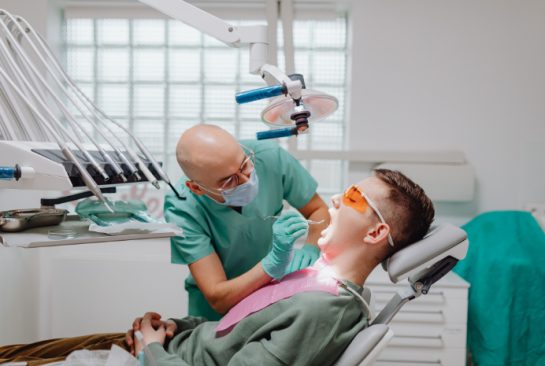- SHOWCASE

Maintaining Healthy Gums
Just as a plant depends on a good root system to flourish, the teeth require a good and supportive environment in order to remain strong and healthy.
Although the teeth may appear to be in great condition and trouble-free, this does not automatically mean that the gums are as healthy as they should be. Unless the gums become inflamed or painful, it is often difficult to know that something may be amiss.
Taking proper care of the teeth is obviously important and includes brushing properly, flossing and regular check-ups at the dentist – but without the support of healthy gums, the best care may be in vain. Failure to maintain the gums in a healthy state will lead to dental issues and gum disease, or gingivitis, is almost inevitable!
Onset of Gum Disease
Gum disease takes time to develop, and the early warning signs are often missed or simply ignored. The condition first begins with a build-up of plaque on and under the gum line. Plaque contains bacteria that can lead to infection of the gums and the underlying supporting bone.
This early stage of the disease is called gingivitis and is often accompanied by some or all of the following symptoms. The gums may become:
- Swollen
- Redder in color
- Tender to touch
- Inflamed
- Likely to bleed
At this stage, the condition is reversible as the teeth’s supporting tissue and bone are not affected. But left untreated, the disease will continue its advance and develop into periodontitis and on into advanced periodontitis.
Periodontitis affects the bones holding the teeth and can destroy these bones as well as the gums and connective tissue. At the advanced stage, periodontitis can destroy the supporting bone and lead to tooth misalignment, bite problems and may necessitate one or more extractions.
Know the Signs!
When caught in the early stages, gum disease is reversible – and there are some early indicators that should be watched out for including:
- Frequent or persistent bad taste in the mouth
- Persistent bad breath (halitosis)
- Tender, swollen or reddened gums
- Bleeding from the gums (usually when brushing teeth)
- Gums pulling away from the teeth
Although these symptoms may seem to come and go, the problem still exists – and ignoring the signs will only allow gum disease to continue its steady advance. Once these signs have been noticed, it is important to take prompt action to combat and reverse the condition.
Preventive Measures
The key to having healthy gums is to try and avoid possible issues before they begin. This is not difficult to do and simply involves following a good dental health regimen along with using some common sense.
Prevention is always preferable to cure and taking a few preventive measures will greatly reduce the risk of developing gingivitis or gum disease.
- Brush teeth after meals to remove food particles and prevent plaque setting in.
- Brush teeth at least twice daily.
- Brush the tongue gently when brushing teeth.
- Use a soft-bristled toothbrush.
- Change your toothbrush regularly: at least every three months or when worn down.
- Floss your teeth at least once a day.
- Use a toothpaste containing fluoride.
- Use mouthwash regularly to rinse out the mouth and awkward spaces between teeth.
- Quit smoking or using tobacco products.
Following these simple guidelines will prevent plaque from building up and becoming a real issue. However, simple at-home maintenance will not be sufficient on its own.
Professional help is also required and regular check-ups at the dentist along with professional teeth cleaning will also be necessary.
Professional Assistance
Despite best efforts at dental hygiene and cleanliness, plaque bacteria will continue to accumulate along and under the gum line. While this process can be greatly slowed down by following good dental health practices, plaque can never be fully contained or eliminated with the risk of gingivitis always present.
Although all traces of plaque on the teeth and gum line may seem to have been removed, there is a strong likelihood that this is not the case under the gums.
A dentist or dental hygienist can check under the gums for any signs of plaque and quickly remove it. This needs to be done on a regular basis to prevent the plaque from further penetrating down into the gums and becoming increasingly more difficult to remove.
The risk of developing gum disease can be greatly reduced by an individual but it also requires professional assistance to secure the best protection against the onset of gingivitis.
Taking preventive measures in combination with a dentist’s assistance may not totally eliminate the risk of gingivitis, but it will go a long way to achieving and maintaining healthy gums – and that is the biggest defensive weapon in the fight against gum disease.







